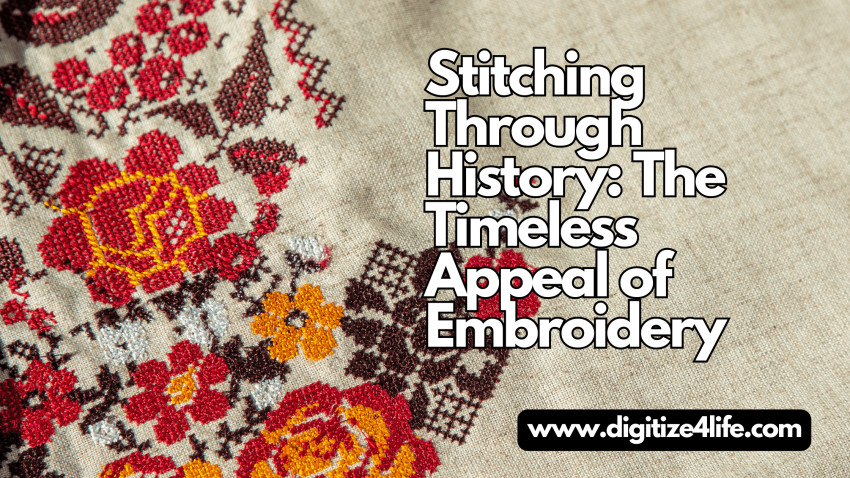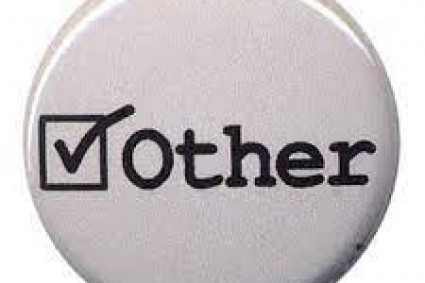
Introduction:
Embroidery, the decoration of fabric with needle and thread, is extraordinarily rich and complex. From ancient times to the present, this immortal craft has embellished dresses, home decorations, and ceremonies. Objects that symbolize popularity, lifestyle, and personal expression The origin of embroidery suggests The discovery of embroidered clothes in the tombs of Egyptian pharaohs and the complicated silk embroideries of ancient China show the appreciation of this craft. Those early pieces were now not simply decorative; they conveyed social standing, secular belief, and cultural identity.
In China, the art of embroidery flourished sometime during the Han Dynasty (206 BC — 220 AD). Techniques such as silk thread embroidery and gold and silver threads became well known. The famous Silk Road facilitated the exchange of products and ideas, spreading Chinese embroidery strategies to various parts of Asia and Europe.
Embroidery in the Middle Ages and Renaissance
In the Middle Ages, embroidery became important to the European lifestyle. Monasteries and monasteries were facilities where embroidery was produced and intricate designs were developed for secular clothing, altar cloths, and tapestries. The Bayeux Tapestry, a masterpiece of the 12th century, is one of the best-known examples of medieval embroidery. It describes the events leading to the Norman conquest of England.
Art and embroidery techniques were revived during the Renaissance. Richly embroidered clothing and home furnishings became a symbol of wealth and class. Techniques such as black work, a style of embroidery with black thread on white linen, gained popularity in England. This length also showed the introduction of the latest oriental materials and techniques, which enriched European embroidery culture.
Embroidery in the 18th and 19th Centuries
The 18th and 19th centuries saw significant developments in embroidery strategies and patterns. The Industrial Revolution improved the production of fabrics, making them more available and affordable. This democratization of subjects allowed embroidery to spread beyond the aristocracy to the middle class.
In the 18th century, embroidery made with wool, linen or cotton thread became fashionable in England and America. Floral motifs and pastoral scenes were famous themes that reflected the romanticism of the generation. The Victorian generation, which emphasized the domestic and decorative, saw the rise of needlepoint and cross stitch. Women of the time often used embroidery to personalize household items and create heirlooms.
Cultural Significance of Embroidery
Throughout history, embroidery has had a significant cultural and symbolic meaning. In many cultures, embroidered clothing and textiles are used in rituals and ceremonies and as status symbols. For example, in Eastern Europe, elaborate traditional clothing styles often represent regional identity and social popularity.
In Asia, embroidery is deeply rooted in cultural practices. Japanese sashiko, a form of decorative reinforcement stitching, combines application with aesthetics, even as Indian zari embroidery, using gold and silver threads, adorns saris and wedding dress that symbolize wealth and pleasure.
Modern Embroidery: A Fusion of Tradition and Innovation
Today, embroidery is constantly evolving, combining traditional strategies with modern designs. Interest in handmade crafts brought embroidery into the limelight. Contemporary artists and architects are pushing the boundaries of this historic art form and combining it with style, stunning artwork and virtual media.
Contemporary embroidery often explores themes of identity, politics and private expression. Artists such as Tilleke Schwarz and Sarah K. Benning create works that take conventional notions of embroidery and use them as a means of storytelling and social observation. In addition, technological advances have led to gadget embroidery, making the craft better, more accessible and more versatile.
Therapeutic Benefits of Embroidery
In addition to aesthetic and cultural importance, embroidery also offers several therapeutic benefits. The rhythmic movement of sewing can be meditative, reduce stress and promote mindfulness. Embroidery can also improve fine motor skills and increase creativity. Many people take joy and pride in being able to grow something beautiful with their hands, making embroidery a popular pastime for people of all ages.
Embroidery in the Digital Age
In the virtual age, embroidery has found new opportunities for expression and networking. Online systems and social media have given artists and hobbyists the opportunity to share their work, exchange ideas and learn from each other. Virtual workshops, tutorials and pattern sharing sites have made it easier than ever to start or improve your embroidery skills.
Digital tools such as embroidery software and computer sewing machines have expanded the possibilities for intricate and special designs. Despite these technological advances, the essence of embroidery — its tactility and the personal impact of the artist’s hand — remains unchanged.
Conclusion: The Enduring Appeal of Embroidery
The enduring appeal of embroidery lies in its potential to connect us beyond the reach of others, while enabling endless creativity and innovation. As we have seen, this art form has been part of human tradition for millennia, evolving with each generation and maintaining its core appeal. Whether it’s a traditional hand-stitched heritage or a modern digital design, embroidery continues to fascinate and inspire.
By learning and appreciating the rich history and cultural significance of the embroidery technique, we can continue this wonderful craft and ensure its legacy for future generations. So pick up a needle and thread and be a part of this immortal way of life — stitch with stitch.





